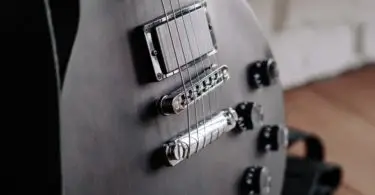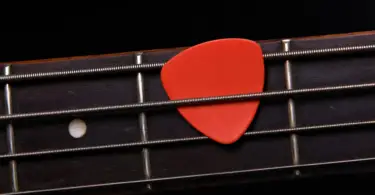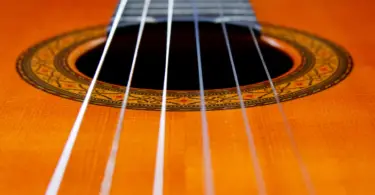A lead guitarist’s most obvious task is bursting into a solo playing in the middle of a song. However, the role involves much more than simply solos. To learn to play lead guitar, you must first learn how to participate throughout a song. It isn’t only in the solos! A lead guitarist may come in and out of a song, complementing moments and melodic lines that contribute a lot to it.
So how do you start learning how to play lead guitar? First, you must identify the key of a song and learn how to do scale. Then apply scale sequences. Next is learning phrasing techniques and the guitar licks. After that, create your lead guitar licks. Lastly, repeat the process and add new lead guitar elements.
Watching skilled lead guitarists is a great method to play and learn lead guitar. It serves as a source of inspiration and concepts. Actively observe (rather than passively enjoying the show), understand it! You’ll notice things you enjoy, and then you’ll be able to learn about them.
It’s critical to realize that there would be no magic effect here. Learning to play lead guitar is something that everyone can do. All you need to do is master the fundamentals of lead guitar techniques. But, again, these are tried-and-true steps that anyone can follow, so don’t fear like you’re not ‘gifted’ enough. It is just a small part of the totality, and your determination will play the biggest role in learning lead guitar.
Quick Links
Learning keys
The most critical thing for a lead guitarist to understand is what key the music or song is in.
Once you’ve determined the music’s key, you may just blow off on a scale that complements the key. Whenever you play in a complimentary scale, you may be confident that any note you play inside that scale will sound good.
It allows you the flexibility to play anything you want (on that scale) while knowing you won’t slam out a terrible note. It implies you can genuinely improvise.
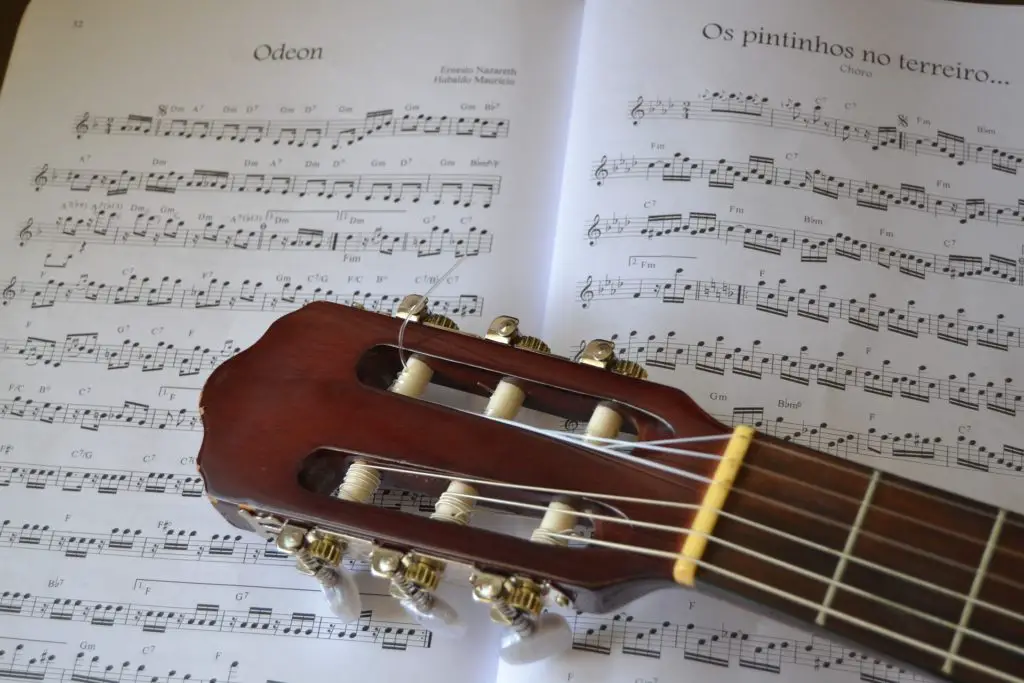
How will you identify the keys of a song?
Among the most difficult thing to overcome as a beginner is determining the key to one song. Several songs use basic chords in a key, making the whole process way easier. On the other hand, some songs are not simple and need a bit of effort to grasp. This course uncovers the most effective techniques for dealing with this situation.
The focused note on music is the key of a song, and it is called the tonic. So, for example, you were playing the key of C, and then the tonic chord is C major.
The key signature of a song is the simplest way to determine its key. The number of sharps in the song’s key signature denotes the song’s key. For example, the C key has no flats or sharps in its signature (or A minor).
Also, in many situations, the final note or chord will be the key to a song. However, this is not always the reality. Therefore, you may still need to chart the notes to check the key matches to verify the key.
It is often necessary to lay out the notes and examine where they match to determine the key of a song. Unless you know your keys by heart, you’ll certainly want to consult a key chart.
You could also use a tool, which provides notes and scale sequences for all minor and major keys.
It takes practice to learn how to discern the key of the music. Because it’s not like all song chords fit cleanly into a particular key. Only practice will improve your ear and make everything easy.
Learning scales
Scales are simply a collection of chords that sounds well when played together. It is a collection of descending and ascending notes used to create a melody. Scales are always the foundation for harmonies and can also produce songs from scales.
There are several reasons why you should start playing a variety of scales. First, for a beginner, they are beneficial to your fingers like a kind of physical training, as they will aid in the development of your finger dexterity. Second, it will assist you in improvising (making up solos) and understanding solos, which you may learn and understand why others play the chords they do.
Minor pentatonic is the most usual scale to acquire or learn first. Once you’ve mastered the minor scale, that is the time you can start learning Major Scale.
Always begin and end with the lowest note (thicker strings). It will assist you in keeping the harmonic components of a certain scale in your mind, allowing you to hear the right tone of a scale. As we advance, you may learn the modes and various ways to employ the scales.
The tonality of a scale is defined by its root note. With Minor Pentatonic, for instance, there is a note of R on the 6th string, which is strummed with your first finger. The identity of scale is determined by where you position the note. For instance, the A Minor, to play this scale, place the root R note on the A note, which is located on the 6th string of the 5th fret. To play the Pentatonic Scale of C minor, position the R note on the 6th string of the 8th fret. You may play the scale anywhere; simply place your first finger on your desired note.
The most notable 6th string notes are F on the 1st fret, G on the 3rd fret, A on the 5th fret, B on the 7th fret, C on the 8th fret, D on the 10th fret and lastly, E on the 12th fret.
Matching a scale to a key
Assume that you have a tune you want to play on a specific scale but do not have any chords to complement it. So how will you go about creating a chord sequence that complements your melody?
When you have a scale, then you already have the notes you need in the scale.
It is the note, which is rooted in the tonic scale. This chord will be a triad C Major if you are playing a scale of C Major. It is an excellent beginning and ending chord.
When you have it, you may create different chords by combining notes from the scale. Using the same method, you may create a chord from every note in the scale. That is seven distinct chords from which to pick within a key.
You may try different chord combinations to find something that fits with your tune, or simply listen to the melody and select chords that include the same notes to execute at that moment.
The connection between keys and rhythms is not as difficult as you would imagine. It is more about complementing, and the more you get acquainted with the guitar, the more you want to fit them perfectly.
Learning phrasing techniques
The phrasing technique is a method for producing a new sound from the very same sounds.
The phrasing on the guitar is comparable to the natural pauses that occur in everyday talks. Normal interactions are ever-changing. As meaning shifts back and forth, they rise and fall. Pauses, varying levels of concentration, and so forth are common in conversations.
Metronome practice
A metronome is an indispensable instrument for guitarists. Many guitarists utilize a metronome to improve their skill and refinement with scales, but they fail to use it to improve their phrasing abilities.
Practicing using a metronome aids in the development of more intriguing rhythmic concepts. After all, phrasing is all about rhythm and time. Begin with fundamental rhythm guitar beats, such as quarter notes, eighth notes, triplets, and sixteenth notes, and set the metronome to play them.
Don’t be scared to try new things since you never know what will happen. However, it is quite simple to feel comfortable with established patterns, and while repeating the same actions offers confidence and security, you may use what you know to extend and improve your musicality.
Here are a few examples:
- Experiment with different methods of playing a guitar lick.
- Slow down
- Speed up
- Omit a few notes and replace them with a few pickup notes
Experiment with loudness and dynamics.
- Playing a sentence louder or softer has a distinct emotional impact.
Experiment with various picking strategies.
- Practice the very same lick using a pick with your fingers, legato, and so on.
Learning guitar licks
Isn’t it simple to learn a guitar lick? You keep playing it over and again – slowly at first, of course – until you understand it. Well, sort of. When dealing with difficult phrases, it’s best to isolate distinct components and polish them before putting them all together.
Everything will come together faster after your muscles have stored the motions in memory. The phrases below have a lot of technical difficulties that need to be handled one at a time:
- Vibrato with the fourth finger: Concentrate on a steady vibrato with your weakest finger.
- Quick hammering and pulling-off: Make each one not clean and even in length and volume.
- String crossing: As you deal with one of the most difficult choosing maneuvers, aim for little pick movement.
- Alternating picking: Use rigorous alternate picking to make each one clear.
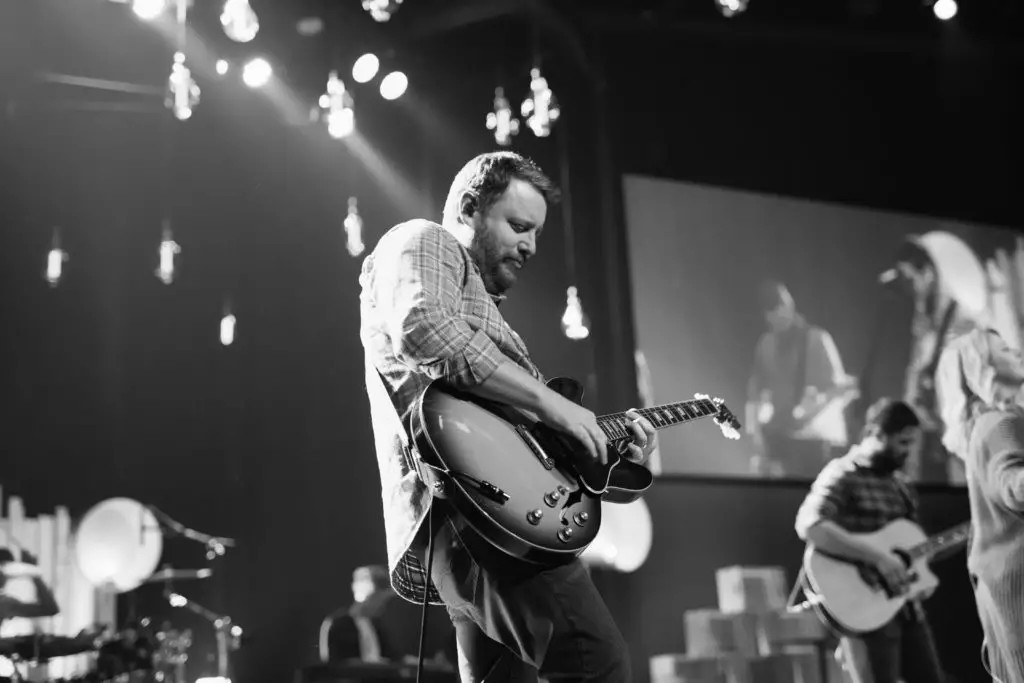
Creating lead guitar licks
I make a lick by combining a snip out from the scale sequence to a phrasing technique, which is a highly mechanical thing to do.
But using such a mechanical technique is a useful first step toward improvisation – creating music at the moment.
Thus, you will return to the scale sequences in this phase and select your snippets to combine with string bending (or other techniques) to generate your guitar licks.
Not many guitar players think this way.
Here are several tips on how you will effectively do it:
- Be fun when you’re creating. Every scale sequence snip can be either short or long, repeated, reversed, or changed. You may also modify the sequence and rhythm of the notes.
- However, do not play notes which are not on the scale. Though this is not a requirement, and so many guitarists use chromatic notes into their licks and solos, it is not recommended at this level of your development.
- In the A minor pentatonic scale, the finest notes to bend are on the 7th fret of the G string and the 8th fret of the B and E strings. If you don’t bend these notes all the way, you’ll be playing notes that aren’t in the scale.
Repeating the process and adding new guitar lead elements
This stage is just a means of continuing to improve beyond the fundamentals.
Return to the learning keys part and learn a new scale or same scale at a different place on the guitar neck. Then, using this new scale pattern that you’ve learned, apply scale sequences to it. Again, you should learn a different ability or enhance an old one.
Finally, go through what you have learned about guitar licks and creating lead guitar licks, looking for ways to use your newfound understanding to produce guitar licks and, ultimately, whole solos.
Conclusion
As you improve as a lead guitarist, your learning requirements will become more genre-specific. As a result, you must keep doing it over and over till you reach your desired destination. From there, you should study topics that are most relevant to your musical ambitions. Regardless of musical genre, the only thing I can recommend is to study the fundamentals of music theory to help you advance toward your objectives.


